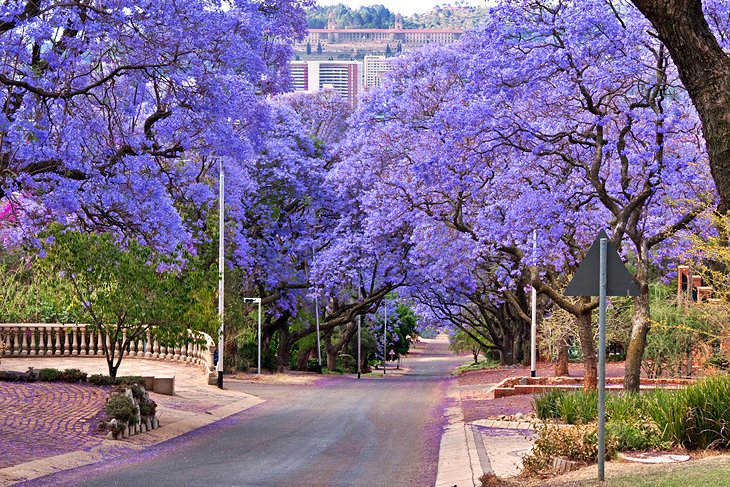Everything about Johannesburg North Attractions
Everything about Johannesburg North Attractions
Blog Article
Some Known Incorrect Statements About Johannesburg North Attractions
Table of ContentsGetting The Johannesburg North Attractions To WorkWhat Does Johannesburg North Attractions Do?An Unbiased View of Johannesburg North AttractionsThe 5-Second Trick For Johannesburg North AttractionsThe Johannesburg North Attractions DiariesThe 3-Minute Rule for Johannesburg North Attractions
The city owes its place to the visibility of an also much more precious source: gold. The city expanded on the side of the Witwatersrand Key Coral reef, a subterranean stratum of gold-bearing quartz-silica empire that arcs for numerous miles underneath the Highveld. The majority of the gold mines in the city stopped operation in the 1970s, but in its day the Witwatersrand gold sector accounted for more than 40 percent of the world's yearly gold manufacturing.Johannesburg has a temperate environment. Summertime temperature levels balance about 75 F (24 C); winter months temperature levels average about 55 F (13 C) and just occasionally dip below cold. The city appreciates concerning 8 hours of sunshine each day in both winter season and summer season. Rain averages about 28 inches (700 millimetres) per year, yet the total varies considerably from year to year.
What rain the city obtains drops virtually specifically in the summer months, usually in stunning late-afternoon electrical tornados., where many residents still depend on coal for fuel.

All about Johannesburg North Attractions
The balance of the city is occupied by whites. Holiday accommodation differs in personality and top quality. Soweto is well-known for its endless rows of municipally built, two-room matchbox homes, yet it also has a few flourishing territories as well as bristling squatter camps, where tens of thousands live without water, electrical energy, or sanitation centers.
Physical development, although somewhat limited by transport, proceeded promptly as immigration to South Africa, and Johannesburg particularly, enhanced drastically. This trouble was resolved in the 1930s when the car was introduced in automation to South Africa. Cars were, generally, confined to the wealthy, and permitted them to relocate to the north of the city and commute right into the centre.
Many bad residential areas were mixed, with inadequate blacks and whites living together, although the affluent residential areas were usually reserved for whites. This transformed with the election of the National Party in the 1948 political elections, who began to formalise the system called racism. Discrimination officially designated which suburbs each race More hints could reside in under the Group Locations Act.
The previous system of eleven numbered areas was reorganised in 2006. Marshalltown, as seen from the top of the Carlton Centre. The M1 and M2 run behind the buildings, and the southern suburbs extend past the freeway border. The central city of Johannesburg lies within the city's Area F. The number of people living in the internal city on a casual basis is unknown, as many are illegal immigrants. The joblessness, education, and age accounts of the area are all unidentified, due to the problem of getting reliable information about the area.
Little Known Facts About Johannesburg North Attractions.
Yeoville and Bellevue have a mix of apartment and single residential systems on little lots. The area is situated on a mountainous divide that runs from east to west. The most noticeable geographical feature is Observatory Ridge, which is named for the big observatory located on it. The recreational spaces are no more used, as a result of security problems.

How Johannesburg North Attractions can Save You Time, Stress, and Money.
R. Tambo International Airport Terminal). The eastern suburbs are several of the oldest locations of Johannesburg, there are large areas of Jewish and various other European histories, most of the populace is English speaking. There are three fairway along with a variety of safeguarded ridges with viewsites. There are several strong and up-market amusement and purchasing areas in the east such as the Eastgate Buying Centre and the Greenstone shopping center.
The location is primarily composed of old "matchbox" residences, or four-room houses constructed by the federal government, that were constructed to give affordable holiday accommodation for black workers during apartheid. Soweto is an abbreviation, representing "South Western Townships". Street after road in this location is lined with matchboxes; nonetheless, there are a few smaller sized areas where thriving Sowetans have actually constructed homes that are more similar in stature with those in more wealthy suburbs.
Hostels are another noticeable physical attribute of Soweto. Originally built to house male migrant workers, many have actually been boosted as homes for couples and family members. The N1 Western Bypass skirts the eastern border of Soweto. The suburban area was not historically enabled to produce employment centres within the check this site out location, so nearly all of its locals are commuters to other components of the city.
Some Known Details About Johannesburg North Attractions
The about his residential areas in the northern suburban areas are mainly official, with no substantial areas of casual real estate, or real estate that does not have a permanent structure. This is a recognized location, there is a fad of land usage modification from domestic to business, specifically along main arterial roadways and around recognized nodes.
The location is well attached to roadway networks, especially along the north-south axis created by the M1 and N1. Roadways to the east and west are less well developed, as there are no freeways travelling because direction. In the direction of the northern boundary of the city, the density of growth decreases, leaving large locations of untaught land around Midrand.
Getting My Johannesburg North Attractions To Work
The first suburb to the north of the inner city is Parktown, which lies on a hillside neglecting the central city and Hillbrow. It has lots of rich citizens and Edwardian-design manors, in addition to the Education and Medical schools of the College of the Witwatersrand. The huge concrete Charlotte Maxeke Johannesburg Academic Hospital controls the sky line of Parktown.
Report this page